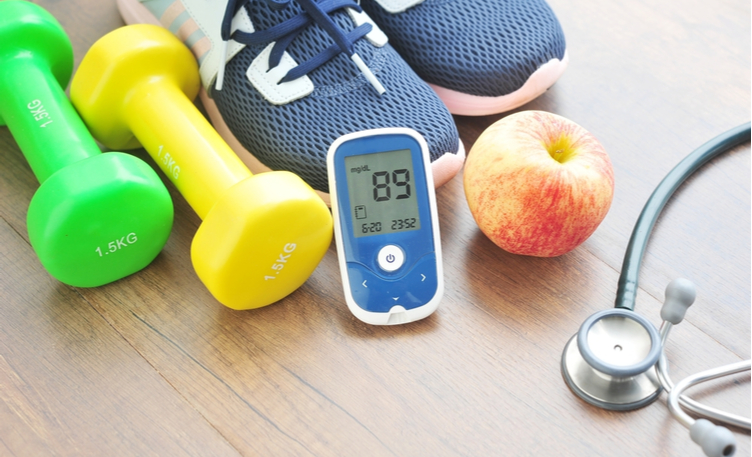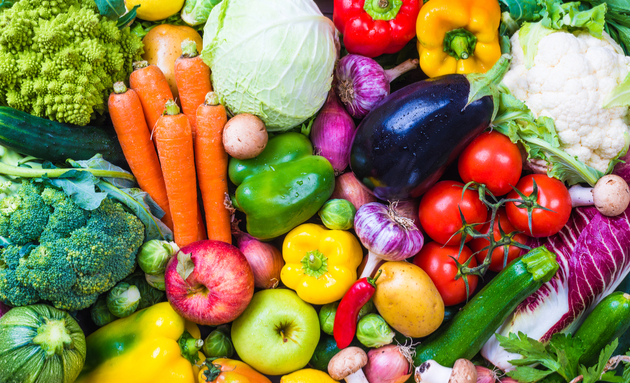
6 Ways To Cope When You Have Type 2 Diabetes
-
Take Small Steps
A disease like Type 2 diabetes can have a long-term effect on your life. But instead of getting overwhelmed about it, set small weekly goals that will help you deal with the stress in a productive way.
One of the best things you can do to feel more positive is to start incorporating physical activity into your daily routine. If you are someone who doesn’t play a lot of sports, start by getting outside and going for a short walk or find something else that you would enjoy doing, like yoga or a dance class.
One of the main priorities should be to make time for yourself. It’s okay to feel overwhelmed but don't forget to take a few minutes of your day to do something that makes you happy. This could be a fun activity like playing music, painting or meditating. Just spending some time relaxing can get you back on track to feeling like yourself.
-
Be Mindful About Your Diet

When you have Type 2 diabetes, your body finds it difficult to absorb sugar, either because the body doesn’t produce enough insulin to process it, or because it doesn’t use insulin properly (insulin resistant). When the sugar cannot be utilized by the body, it results in elevated blood sugar levels in the bloodstream. Foods with a low glycemic index are recommended as they only cause a modest rise in blood sugar and can also help prevent long-term complications that occur with Type 2 diabetes.
Your diet should include a healthy mix of the three macros; carbohydrates, protein and fats; along with fibre. You can get your daily intake of complex carbs from brown rice, whole wheat, oatmeal, fruits, vegetables, beans, and lentils like Moong and Masoor Dal. Protein-packed foods to eat include legumes (Channa or Urad dal), eggs, seafood, dairy, peas, and lean meats and poultry.
Add vegetable oils to your diet instead of animal fats and butter to get your healthy fat intake. You can get fibre from foods such as fruits, vegetables, whole grains, nuts, beans, and legumes like rajma which will aid in digestion and blood sugar control. Avoid soft drinks, refined sugars, processed carbohydrates, trans fats, high-fat animal products, high-fat dairy products, high fructose corn syrup, artificial sweeteners, and any highly processed foods.
-
Include Strength Training
When you have Type 2 diabetes, physical activity should become an important component of your treatment plan. By incorporating an exercise regime, you will be able to control your blood sugar levels. Controlling your blood glucose level is essential in preventing long-term complications, such as nerve pain and kidney disease that are associated with Type 2 diabetes.
Although aerobic exercise is often promoted as a way to manage Type 2 diabetes, adding strength training to your workout plan becomes equally important. When you do strength training exercises that work on the muscles, your body uses glucose from your bloodstream to power them; this is very helpful in clearing out excess sugar from your system. It is recommended to include a strength training session of 20-30 minutes at least two to three times a week.
-
Join A Support Group

It helps to talk to someone who understands and can relate to what you are going through. A support group doesn’t necessarily mean sessions of psychotherapy, but it can provide you with a safe place to share your situation and get the required encouragement and comfort.
Connect with your local diabetes community through your local hospital or doctor. Besides the emotional support, these groups can also provide a wealth of information and ideas on ways to make managing diabetes easier. This could be in the form of diabetes-friendly recipes, hacks to eating out and local resources for people with diabetes.
Some diabetes support groups also feature guest speakers such as physicians, researchers, and other experts who speak about the latest findings in diabetes management or share their perspectives.
-
Use Technology
Managing Type 2 diabetes can be challenging. But the right technology can sometimes make all the difference. You can find many resources online that help you keep track of your condition. If you have a smartphone, apps designed for people with diabetes can help you count carbs, watch your blood sugar levels, and track your progress with diet and exercise. If you have a hard time remembering to take your medications, you can sign up for apps that will send you reminders.
-
See Your Specialists

Dealing with a disease like Type 2 diabetes will require you to have a set of specialized health care professionals who know diabetes inside out. These could include:
- An endocrinologist, who has a lot of experience working with people who have diabetes
- An ophthalmologist for your eyes
- A registered dietitian, who can give you pointers on what to eat
- A diabetes educator
It also helps to keep your friends and family involved so that they can help you in the case of an emergency. Additionally, if everyone in the household starts following a healthier diet, it will become easier for you to do so too.






